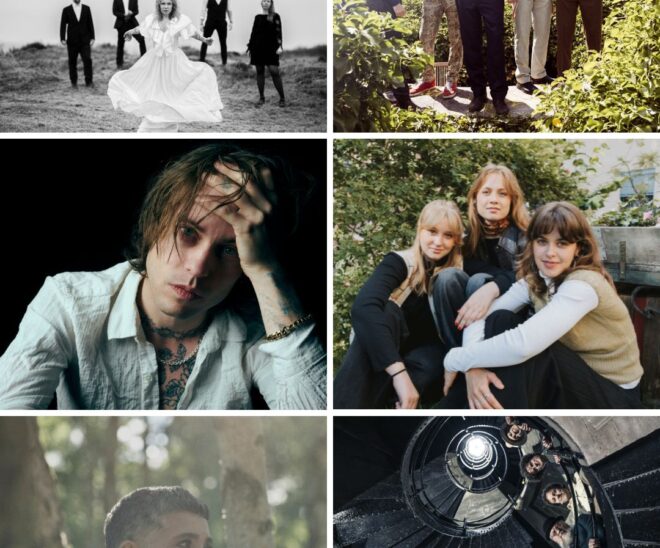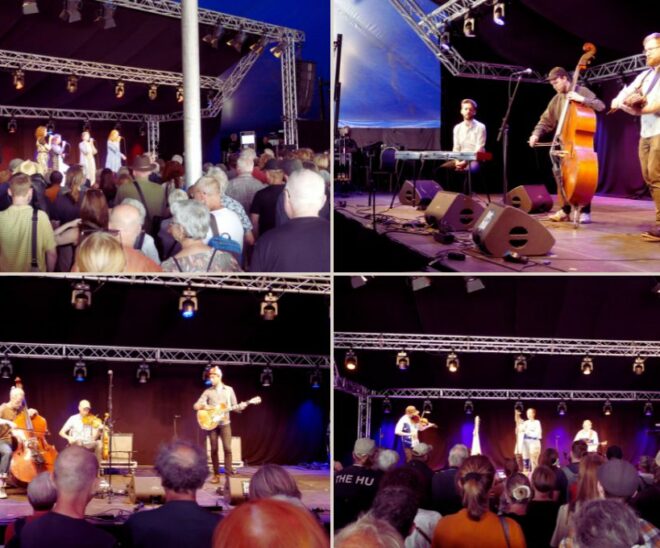Hvad var dit formål med at deltage i Folk Spot 2022?
Jeg deltog i Folk Spot 2022 for at opbygge et netværk med branchefolk og kunstnere, høre om, hvad der sker i de skandinaviske og internationale industrier, og for at kunne opleve koncerter med både kendte og nye kunstnere. Der var et godt udvalg af internationale delegerede, som Folk Spot havde inviteret, og sikke en række koncerter! Tønder Festival har stået på min ønskeliste i mange år, og jeg fik endelig mulighed for at være til stede og opleve festivalen.
Hvilke trends og tendenser ser du i folkemusikken lige nu?
Folkemusikgenren er større og mere vidtfavnende end nogensinde, synes jeg. Trends og tendenser går i en slags ring; at blande folkemusik med nutidig musik som pop, rock, metal etc. har altid været der, lige siden Edvard Grieg blandede gammel arv ind i nye musikalske retninger i 1800-tallet. Samtidig er der udøvere, der prioriterer og fastholder traditionel musik, selvom disse stadig kan kæmpe med, at det at fremføre traditionelt repertoire ikke giver så store indtægter, får mindre synlighed i medierne osv.
Jeg har arbejdet som teamcoach i det prisvindende projekt Global Music Match i tre år, og jeg ser, at folkemusik verden over rummer alt fra traditionel, singer/songwriters, americana, indigenous, soloartist, artister med traditionelt repertoire mv. – der er plads til alt og alle i folkemusik!
Hvad tænker du om den danske folk-scene kontra den norske? (Forskelle og ligheder)
Jeg ved for lidt om den danske folkescene endnu til at sige noget om forskellene og lighederne, men det, jeg har oplevet gennem mit arbejde med VÌÌK, Tempi, samt min deltagelse i SPOT og Folk Spot, er måske den største forskel musikalsk. Den norske folkemusik har rødder i brugskunsten – til opgaver og gøremål, som gav solisterne en helt særlig rolle og stadig har den i Norge, mens dansk folkemusik har rødder i det sociale fællesskab omkring bordet, fællesskabet i forestillingen. Lighederne er, at både den danske og norske folkescene “konkurrerer” mod andre genrer i forhold til scener at optræde på scenen, opmærksomhed i medierne, streaming, adgang til nyt publikum osv.
Heldigvis har både den danske og norske folkescene organisationer, der virkelig arbejder for at få kunstnerne og musikken derud, som Tempi og Music Norway.
Fik du oplevet nogle gode bands under dit besøg?
Tønder Festival havde et godt line-up! Ville gerne have set alle, der spillede, men der var ikke tid. Jeg fik set alle, der spillede på Folk Spot-programmet, og der vil jeg gerne fremhæve Mathæus Bech, Tone of Voice Orchestra, Kajsa Balto og ikke mindst Fiona Folk Brothers, som sørgede for, at jeg kom til at danse for første gang i over 20 år (tak være dansekongen Martin Strange Lorenzen, der bød op til dans)!
Vil også nævne Del Barber, Som Os, Calby, Raúl Malo, William Crighton, Allison Russell og ikke mindst min yndlings norske Madrugada – sikke en fest!
••••••••••••••••••••
What was your purpose in participating in Folk Spot 2022?
I attended Folk Spot 2022 to build a network with industry professionals and artists, hear about what’s happening in the Scandinavian and international industries, and to be able to experience concerts with both well-known and new artists. There was a good selection of international delegates that Folk Spot had invited, and what a series of concerts! Tønder Festival has been on my wish list for many years, and I finally had the opportunity to be present and experience the festival.
What trends and tendencies do you see in folk music right now?
The folk music genre is bigger and more wide-ranging than ever, I think. Trends and tendencies go in a kind of ring; mixing folk music with contemporary music such as pop, rock, metal etc. has always been there, ever since Edvard Grieg mixed old heritage into new musical directions in the 19th century. At the same time, there are performers who prioritize and maintain traditional music, although these may still struggle with the fact that performing traditional repertoire does not bring as much income, gets less visibility in the media, etc.
I have worked as a team coach in the award-winning project Global Music Match for three years, and I see that folk music worldwide includes everything from traditional, singer/songwriters, Americana, indigenous, solo artist, artists with traditional repertoire, etc. – there is room for everything and everyone in folk music!
What do you think about the Danish folk scene versus the Norwegian one? (Differences and similarities)
I know too little about the Danish folk scene yet to say anything about the differences and similarities, but what I have experienced through my work with VÌÌK, Tempi, as well as my participation in SPOT and Folk Spot, is perhaps the biggest difference musically. Norwegian folk music has its roots in the practical arts – for tasks and chores, which gave the soloists a very special role and still has it in Norway, while Danish folk music has its roots in the social community around the table, the community in the performance. The similarities are that both the Danish and Norwegian folk scenes “compete” against other genres in terms of scenes to perform on stage, attention in the media, streaming, access to new audiences, etc.
Fortunately, both the Danish and Norwegian folk scenes have organizations that really work to get the artists and the music out there, such as Tempi and Music Norway.
Did you experience any good bands during your visit?
Tønder Festival had a great line-up! Would have liked to see everyone who played, but there was not enough time. I got to see everyone who played on the Folk Spot program, and I would like to highlight Mathæus Bech, Tone of Voice Orchestra, Kajsa Balto and not least Fiona Folk Brothers, who made sure that I got to dance for the first time in over 20 years (thanks to dance king Martin Strange Lorenzen)!
I also want to mention Del Barber, Som Os, Calby, Raúl Malo, William Crighton, Allison Russell and last but not least my favorite Norwegian Madrugada – what a party!





